How to replace a log splitter carburetor

This DIY repair guide gives instructions on how to replace a log splitter carburetor. The carburetor mixes air and fuel into a combustible mixture that ignites in the cylinder to power the engine. If the engine won’t start and the tank is full of fresh fuel, remove the air filter and pour about a teaspoon of fuel into the carburetor. If the engine starts and then quickly dies when you pull the starter rope, or if gas pours out of the carburetor, the problem is most likely the carburetor. Replace the carburetor with the manufacturer-approved log splitter part.
Follow the steps in this repair guide to replace carburetor on Craftsman and MTD log splitters.
Instructions
- 01.
Disconnect the spark plug wire
Disconnect the spark plug wire so there's no chance that the log splitter engine could accidentally start.
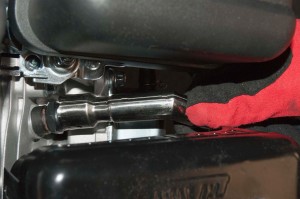
PHOTO: Disconnect the spark plug wire.
- 02.
Drain the fuel tank
Release the spring clamp that secures the fuel supply line to the fuel tank.
Disconnect the fuel supply line from the fuel tank and drain the fuel from the fuel tank into an approved container.
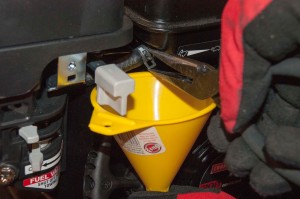
PHOTO: Drain the fuel from the fuel tank.
- 03.
Remove the air filter cover and air filter
Press the release tab on the air filter cover and lift the cover off of the engine.
Pull the air filter straight up and off the top of the silencer plate.
Tip: Clean the filter’s foam element if it’s dirty, following the directions in the owner's manual. Replace the filter elements if damaged.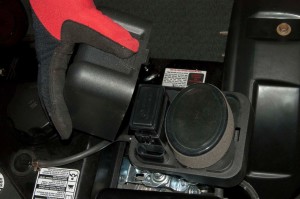
PHOTO: Remove the air filter cover.
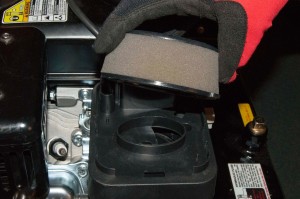
PHOTO: Pull the air filter off.
- 04.
Remove the silencer plate
Remove the two Phillips head screws securing the silencer plate to the top of the carburetor and remove the silencer plate.
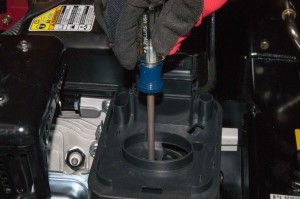
PHOTO: Remove the silencer plate screws.

PHOTO: Remove the silencer plate.
- 05.
Remove the carburetor
Remove the two 10mm cap nuts that secure the air cleaner housing and the carburetor to the carburetor mounting studs.
Remove the 10mm mounting bolt from the top of the air cleaner housing.
Disconnect the vent hose from the valve cover.
Pull the air cleaner housing off of the carburetor.
Note the configuration of the carburetor throttle linkage and governor spring before removing them.
Manually pivot the throttle to align the slot at the top of the throttle with the throttle linkage rod. Pull the throttle linkage rod up out of the slot on the top of the throttle.
Disconnect the governor spring from the throttle on the carburetor.
Pull the carburetor off of the carburetor mounting studs.
Release the spring clamp that secures the fuel supply line to the carburetor and pull the fuel supply line off the carburetor.

PHOTO: Remove the air filter housing mounting cap nuts.
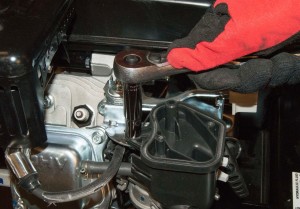
PHOTO: Remove the top bolt.
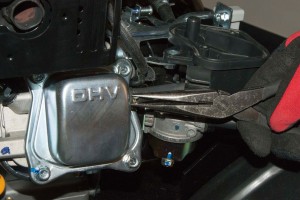
PHOTO: Disconnect the vent hose from the valve cover.
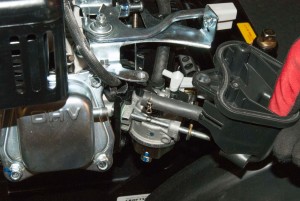
PHOTO: Remove the air filter housing.
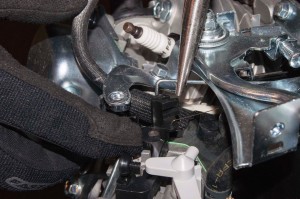
PHOTO: Disconnect the throttle linkage.
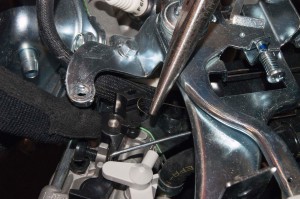
PHOTO: Disconnect the governor spring.

PHOTO: Pull the carburetor off of the mounting studs.
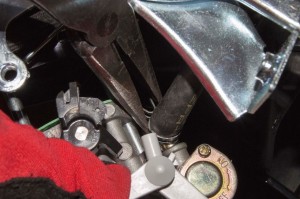
PHOTO: Disconnect the fuel line.
- 06.
Install the new carburetor
Connect the fuel supply line to the new carburetor and secure the fuel supply line with the spring clamp.
Clean gasket residue off the side of the engine so that the new carburetor gasket can seal properly.
Position the new carburetor gasket on the mounting studs against the side of the engine.
Slide the new carburetor onto the mounting studs and push the carburetor against the engine.
Reconnect the governor spring and the throttle linkage on the carburetor throttle.
Position the gasket plate on the mounting studs and slide the gasket plate against the carburetor body.
Reinstall the air cleaner housing on the mounting studs and connect the vent hose on the valve cover.
Reinstall the 10-mm cap nuts on the ends of the mounting studs and tighten the cap nuts firmly.
Reinstall the 10-mm mounting bolt on the top of the air cleaner housing and tighten the mounting bolt firmly.

PHOTO: Connect the fuel line to the new carburetor.
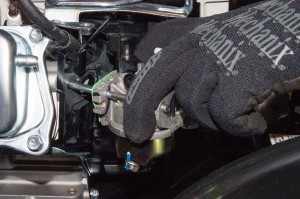
PHOTO: Slide the new carburetor onto the mounting studs.
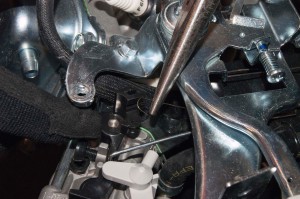
PHOTO: Reconnect the governor spring.

PHOTO: Reconnect the throttle linkage.
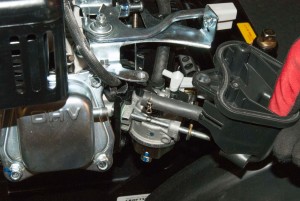
PHOTO: Reinstall the air filter housing.
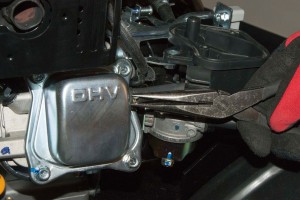
PHOTO: Reconnect the valve cover vent hose.
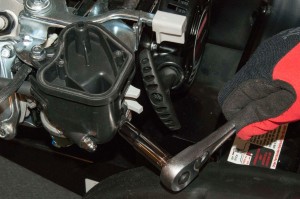
PHOTO: Reinstall the cap nuts.
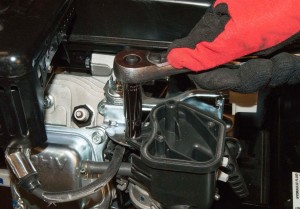
PHOTO: Reinstall the top mounting bolt.
- 07.
Reinstall the silencer plate
Reinstall the silencer plate on the top of the carburetor and secure the silencer plate with the screws.
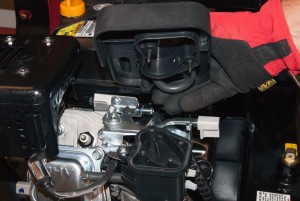
PHOTO: Reinstall the silencer plate.
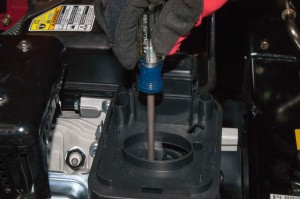
PHOTO: Reinstall the silencer plate mounting screws.
- 08.
Reinstall the air filter and cover
Push the air filter into place on top of the silencer plate.
Reinstall the air filter cover.
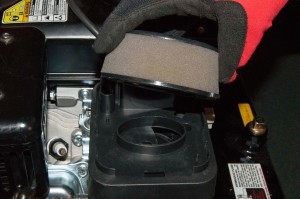
PHOTO: Reinstall the air filter.
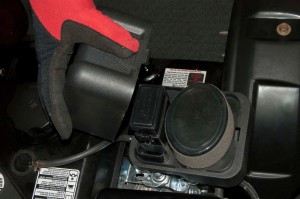
PHOTO: Reinstall the air filter cover.
- 09.
Reconnect the fuel line to the gas tank
Reconnect the fuel supply line to the gas tank and secure it with the spring clamp.
- 10.
Fill gas tank with fuel
Fill the gas tank with fuel and check for leaks.
- 11.
Reconnect the spark plug wire
Connect the spark plug wire and test engine operation.
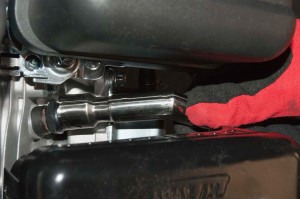
PHOTO: Reconnect the spark plug.
Most common symptoms to help you fix your log splitters
Choose a symptom to see related log splitter repairs.
Main cause: worn hydraulic valve seals around the actuator rod…
Main causes: broken pump coupler, clogged hydraulic fluid filter, bad hydraulic control valve, broken hydraulic pump, ba…
Main cause: worn hydraulic cylinder seals…
Main cause: worn hydraulic pump seals…
Main causes: leaky head gasket, damaged sump gasket, leaky oil drain plug, damaged fuel line, bad carburetor seals…
Main causes: dirty carburetor, bad spark plug, clogged air filter, stale fuel…
Main causes: dirty carburetor, stale fuel, bad spark plug, broken recoil starter…
Most common repair guides to help fix your log splitters
These step-by-step repair guides will help you safely fix what’s broken on your log splitter.
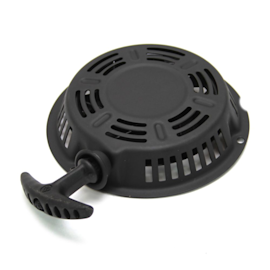
How to replace a log splitter recoil starter
The recoil starter spins the engine on the log splitter when you pull the starter rope, and the rope retracts when relea…
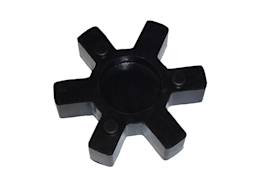
How to replace a log splitter flexible pump coupler
The flexible nylon log splitter pump coupler deteriorates over time. Replace the flexible pump coupler if it begins to v…

How to replace a log splitter fuel line
The fuel line carries the fuel supply from the gas tank to the carburetor. If the fuel line is cracked and leaking, repl…
Effective articles & videos to help repair your log splitters
Use the advice and tips in these articles to get the most out of your log splitter.
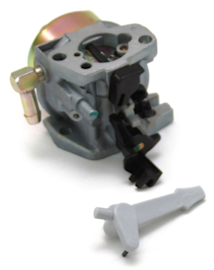
This chart will help you find the right carburetor for your Craftsman snowblower, tiller or log splitter.…

Learn more about your log splitter with these frequently asked questions.…

Learn how to change the hydraulic fluid in your log splitter.…